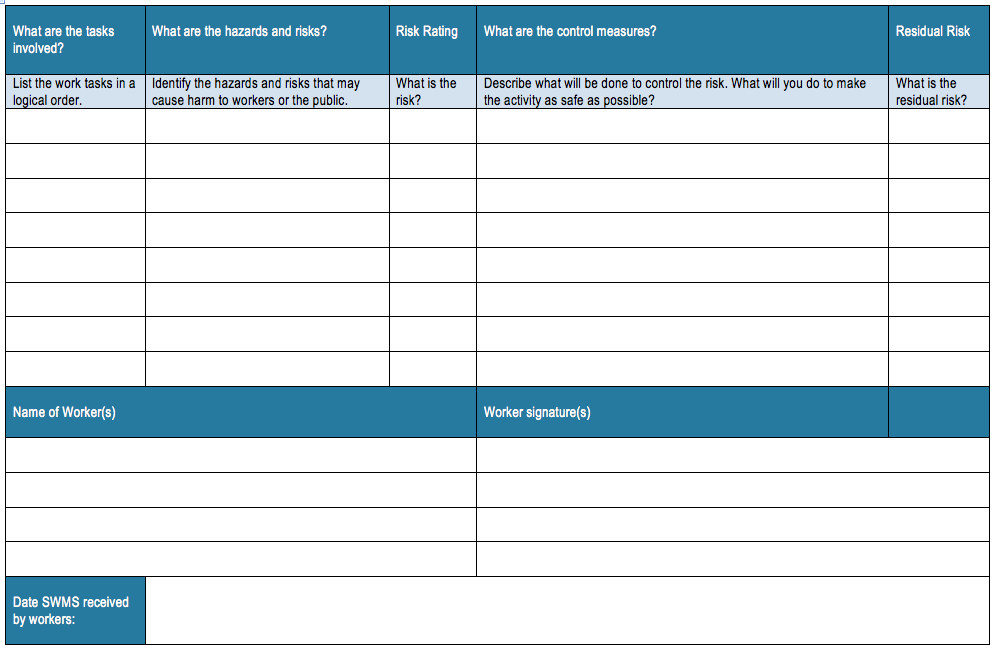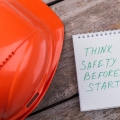How a Simple Process Drives Safety Compliance
Safety management systems have come a long way in the last 250 years. Just think back to workplace conditions during the Industrial Revolution – almost no pay, child labour, very long hours, and extremely dangerous work conditions with exposure to chemicals, accident-prone machinery, and no WHS requirements whatsoever.
But this has changed over the years. Legal reforms and acts were introduced – the Factory Act, the Employer’s Liability Act, and finally, the 1974 Health and Safety at Work Act. This legal document became the foundation for workplace health and safety processes in the UK and the rest of the world. And it led to the increasingly more complex safety processes we have today.
The core purpose of WHS is to keep people safe. Simple. With the increasing complexity of requirements and standards, Business owners, project managers and safety officers alike have to be careful of falling into the trap of using compliance to document requirements like the SWMS as their main measure of WHS compliance. This article looks at why adhering to document requirements is a poor standalone indicator of compliance. We also suggest how a simple safety process drives the success of your WHS compliance.
Documents are Symbols of a Process
Safety isn’t symbolic. It is real and should be treated in the real world, not on a document. Safety management systems do involve documents, but they symbolise a process. For example, a SWMS is a safety planning tool that identifies the risks of high risk construction work and the actions taken to manage those risks. It symbolises the process you are going to take when dealing with the risks and making sure your workplace and its workers are safe from those risks. When it’s under the (judges) hammer, the process symbolised (documented) matters most – not the symbol or the document itself.
Downloading a generic template for your SWMS, JSA, or any other safety document is like taking the symbol without taking the process it represents. And that defeats the whole point of your safety management system and its documents. To comply with WHS requirements, you should be focusing on the processes required to keep your workplace and its workers safe – not just on the documents themselves.
WHS audits look at whether you have followed an effective process that actively reduces the risks in your workplace. They care about if you have actually provided a safe work environment. Not simply whether you have ticked the box of completing a piece of paperwork.
In 2013, The Supreme Court Qld in a case against a QLD construction company for the death of two workers cited:
“work practices focused too much on the work performed onsite and did not pay adequate attention to the dangers presented by the conditions of the site itself”
In other words, not considering risks on the ground, in the real world can have significant impacts when taken to the extremes. Focussing too hard on the details of the tasks to be completed can lead to ignoring all the risks that are actively present
What you focus on matters. And if you want to pass your WHS audit and actually keep your workers safe, then it’s time to focus on the safety management process behind the symbols and documents.
But I still go through a process when filling in a template?
Safety management systems aren’t just about the symbols. They’re about the processes behind them. But you may be wondering – isn’t downloading a generic template still technically a process? Sure. But think about this. What process is more effective at satisfying the Work Health and Safety Act requirement to provide a safe work environment? Is it:
- Find a generic SWMS template on Google, Officeworks or other source
- Complete the boxes provided by the template as best as you can
- Gather up or seek out workers individually and gather signatures
- Store it onsite until the work is done
- Transferring the document to a folder in your office when you are done with the site
Or:
- Identify a the risks onsite, in person
- Build a new SWMS or modify the existing version to cover all task & site-specific risks that are present. Pushed to everyone to sign.
- Monitor how measures are being implemented while work is being completed with real time automated risk rating notifications
- Review by anyone relevant once the work has been completed
- Automatic document storage once complete for any future audits, follow-ups, or learning
From a legal standpoint, the second option is better,
The very purpose of developing a SWMS is to ensure that employers and workers have taken the time to identify the high-risk tasks to be done on site. And then, it is to develop measures to manage these risks and tasks in the context of the work being done. The very nature of a SWMS is that it is specific. It is created specifically in response to a specific site, specific tasks, and specific risks. A generic templated SWMS will not meet the intention behind WHS requirements. Instead, it will defeat the real power of the SWMS and even take away from your safety management.
As WorkSafe Victoria explains, “our concern is not what is written but what actually happens”. A generic SWMS is a symbol of safety that only provides guidance. To focus on the process and comply with WHS requirements, your SWMS and other safety documents need to be customised. It is the second process that is more likely to pass a WHS audit because it demonstrates an active approach to creating a safe work environment. And it is the first process that will get a much more severe punishment when a safety incident does happen, even though both processes are represented by the same type of document.
How to Prioritize the Process
The simplest way to boost the effectiveness of your safety process is to use a digital safety platform like SafeWorkPro. While you can do your safety management physically or digitally, doing it digitally is what will make the difference. Why?
Safety management software simplifies your safety management. Turning a complex process into a simple, easy to understand workflow that allows for an easier way to assess, mitigate, monitor and review workplace risks of all nature. It makes sure that your safety management system is customised, comprehensive, and lets you focus on the process. Leave the document creation, distribution and storage to the software. With safety management software, you can seamlessly customise, prioritise, and ensure your safety management system and its processes exceed WHS regulations.
SafeWorkPro is the Australian safety management software that can make sure your workplace prioritises the process over the symbols.
- Customise your SWMS, JSA, or other safety documents specifically to your worksite using our flexible document builder
- Make sure your specific workplace risks are managed and your workers are safe
- Ensure your company truly complies with WHS requirements
Do all of this seamlessly and in one place with the SafeWorkPro platform. Click the button below to find out more.
More From The SafeWorkPro Blog
Asbestos Risk Assessment
Asbestos disposal is a type of high risk construction work that comes with its own OHS risk assessment form. Like most examples of risk assessment forms, there is no standardised safe work method statement template applicable for every condition. But there are many basic steps that serve as the starting block for any SWMS asbestos removal job.
Firstly the proper documentation must be prepared. This step obviously involves the completion of a SWMS by the person conducting a business or undertaking (PCBU). The SWMS must be available onsite and kept by the PCBU until all high risk work is complete. A licensed asbestos removalist is responsible for the asbestos removal control plan, which should also be available for everyone on the worksite. Lastly, any person who undertakes work in this area, including asbestos testing, must have adequate training through the specified VET course for assessors, or through a tertiary education in OHS, science, building, construction or environmental health.
The next step is the asbestos register. Each state and territory has its own regulatory standards for the registration of asbestos removal or any asbestos related work. For asbestos removal Brisbane, for example, the WHSQ must be informed and PCBU’s must:
- Know how to identify asbestos or any asbestos-containing materials (ACM) on site including friable asbestos
- Keep and update a dated register of the location of any ACM, risk assessments, control measures and the details of the competent person who undertakes the assessment
- Review the asbestos register at least once every five years
Although each state has different regulatory authorities surrounding asbestos OHS issues in the workplace, they are all based on the same framework detailed by Safe Work Australia. SafeWorkPro has provided a free SWMS example for asbestos removal to help your worksite get quick, safe and compliant today.
Risk Assessment Format
Learning how to perform a risk assessment does not have to be a painful experience. It’s all about simplicity. The best risk assessment format is one that remains basic enough so that anyone can easily understand it. Training risk assessment programs are recommended for more complex jobs but for the simpler worksites these tips will teach you how to write a risk assessment.
1: A simple risk assessment works best
A decent risk assessment guide will tell you that complicated language will detract from the overall quality of risk assessment documents.Keeping it short, sharp and too the point will save a lot of headaches. A simple risk assessment is one that uses plain English and considers these factors:
• How well the audience reads
• Information that’s presented in way which anyone can understand
• How overly technical language can confuse readers
• That risk assessments and risk management plans should not take any longer than 16 minutes (why 16 mins exactly? Find out here)
2: Generic risk assessments save time
Using straightforward, simple language not only makes it easier for any reader to understand the risk assessment document but also saves time. High risk construction work is busy business so workers do not have a lot of time on their hands. Clear action words written in an active tone on a step by step basis will simplify the entire risk assessment process and let workers get back on the job quickly.
• Active tone: Remove all rubbish
• Passive tone: All rubbish must be removed
3: Use a risk analysis table
Tables are a great way to clearly break down data and different risk management methods. A risk analysis table breaks the risk management framework into clearly defined steps that workers can go through at their ease. See the below image for an example.

This is all well and good but ultimately even the most effective paper-based risk assessment process is flawed when compared to the digital alternative. To learn about the more efficient and cost-productive risk assessment software, click here.
The Software-Based Approach to a Dynamic Risk Assessment Definition
Any type of construction site risk assessment will have to contend with quickly changing circumstances that may alter or amplify workplace hazards. One of the most effective risk mitigation techniques has proven to be the use of a dynamic risk assessment to address the continually changing nature of high risk construction work.
There are various types of risk management that aim to provide workers and managers alike with the tools and techniques needed to address rapidly changing work environments. But for Australian construction businesses, the dynamic method is best suited to meet the strict demands of health and safety law. Here at SafeWorkPro, we’ve implemented a dynamic approach in the next update to our risk analysis software
But what exactly is a dynamic approach to risk assessments?

There are 5 stages of risk assessment that are incorporated into the dynamic approach (as outlined by Health + Safety at Work).
1: Conduct a risk evaluation of the situation or worksite
Consider the following factors:
- What is the current understanding of the workplace or situation? Are there any other previously conducted risk assessments to evaluate?
- What are the specific tasks required to be undertaken and what are the hazards associated with each?
- What is the risk level associated with each task and who is most likely to be affected?
- What resources are available that could assist in minimising risk?
2: Choose what systems of work will be used.
- What is the most appropriate system of work to be practically used?
- Has the selected system of work been based on adequate planning?
- Are the personnel conducting the work adequately trained in the task being carried out?
3: Assess the selected systems of work.
Consider the following factors:
- Do the risks involved outweigh the benefit of conducting work?
- Are all individuals involved aware of their specific role and responsibilities?

- Are the safe operating procedures well understood by all involved parties and/or individuals?
- If the answer to these questions is ‘no’, then proceed to step 4. Otherwise work can begin.
4: Implement additional controls.
Consider the following factors:
- Can any additional risk control measures be implemented? (eg PPE or specialist equipment)
- What level 3 risk management processes – as outlined in Safe Work Australia’s codes of practice – can be applied as well?
- Can any of these additional controls be used in conjunction with other measures?
4: Review control measures and systems of work.
Consider the following factors:
- If risks remain, do their cost outweigh the benefit of continuing work?
- Are there any safe, reasonably practicable alternatives to the current system of work or implemented control measures?
These are the fundamental steps behind a dynamic risk assessment but as you can see, there are many points to consider. Implementing a dynamic approach to any construction job can come at the cost of productivity. Both workers and managers alike understand that conducting risk assessment – dynamic or not – takes time which when added up over the course of a working year, can result in a large strain on resources. However there are ways to reduce this cost while promoting safe work practices.
This comes in the form of risk analysis software like that used in SafeWorkPro. Our system creates digital risk assessments and safe work method statements that can be updated in real time by workers, giving it a significantly powerful dynamic nature. This in turn not only decreases the time cost of conducting dynamic risk assessments, but also achieves this is a way that promotes workplace safety. For more information, read about what is SafeWorkPro.





